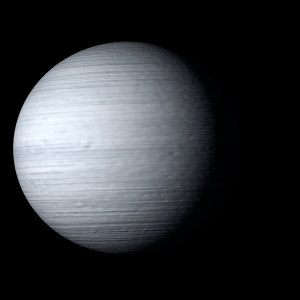|
|
Space Astro
|
Info for exoplanet "Pakupya"
| Scientific (actual) data |
|---|
| Name | NGTS-16 b |
| Planet status | Confirmed |
| Planet mass | 0.667 |
| Radius | 1.3 |
| Orbital period | 4.84532 |
| Semi major axis | 0.0523 |
| Orbit eccentricity | 0 |
| Discovered | 2021 |
| Updated | 2021-03-19 |
| Tzero tr | 2458440 |
| Impact parameter | 0.807 |
| K | 74 |
| Temperature (kelvin) | 1177 |
| Publication | Published in a refereed paper |
| Detection type | Primary Transit |
| Mass measurement type | Radial Velocity |
| Radius measurement type | Primary Transit |
| Star name | NGTS-16 |
| Right ascension | 58.26° |
| Declination | -30.8° |
| Mag v | 14.4 |
| Star distance | 892 |
| Star metallicity | 0.35 |
| Star mass | 1.002 |
| Star radius | 1.213 |
| Star sp type | G7V |
| Star age | 10.29 |
| Star temperature | 5550 |
| Wikipedia article | NGTS-16 b |
Back
| |
| Fictional info (?) |
|---|
| Suggested name | Pakupya |
| Planet type | Hot gas giant |
| It is the coldest planetary atmosphere in its solar system, with a minimum temperature of 40°K (-233°C), and has a complex, layered cloud structure with neon thought to make up the lowest clouds, and ozone the uppermost layer of clouds.
Wind speeds can reach 72 metres per second. |
| Atmosphere | Ozone | 39% |
| Neon | 38% |
| 2H2O | 11% |
| Hydrogen deuteride (HD) | 8.5% |
| Oxygen | 1.6% |
| Molecular hydrogen | 0.54% |
| Ammonia | 0.037% |
| Atmospheric pressure | 2.1 bar |
 |
| No known satellites |
| Google search for Pakupya |
|
Website by Joachim Michaelis
|
|
|
|